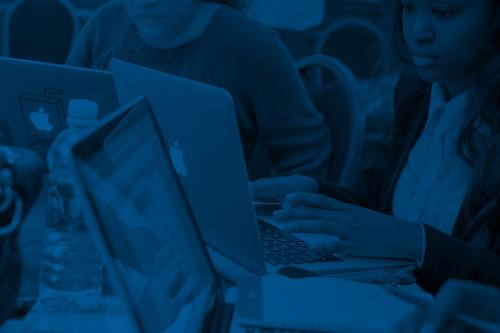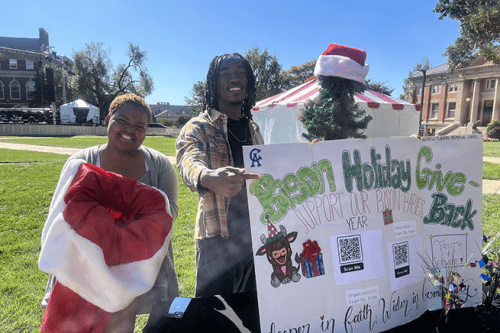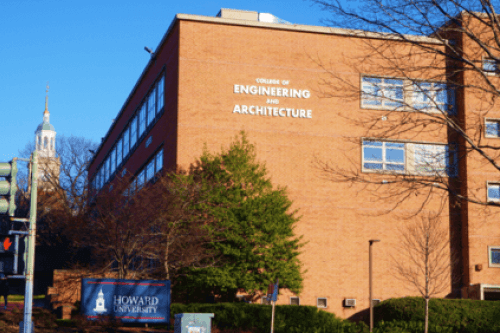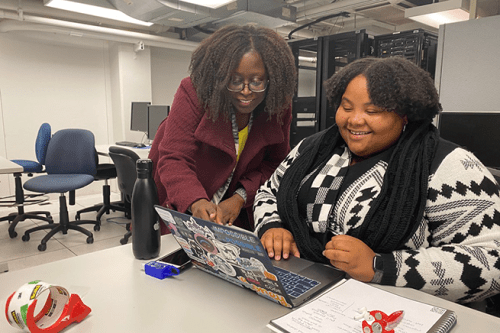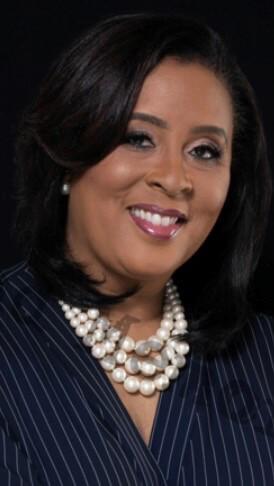
Princess Gamble’s expertise in development, in partnership with Senior Vice President David Bennett, is helping to increase the capacity and effectiveness of the Howard University Development and Alumni Relations Office. Gamble, named associate vice president and chief operating officer of the division of Development and Alumni Relations in 2021, previously was assistant director of advancement for the Smithsonian National Museum of African American History and Culture. At Howard, she co-leads a growing staff of about 40 dedicated to raising money to support the University’s ambitions and to servicing the needs of its alumni.
Q: How has Howard reimagined and enhanced alumni relations in the past few years?
A: I think probably one of the largest transformations is the robust presence of the development function in the schools and colleges, and then the growth of the Development and Alumni Relations team. But there also is prioritization of the need for infrastructure and our back-of-the-house functions, to ensure we are efficiently servicing our donors and alums.
Q: And what changed to make that the priority it is now?
A: Howard has always had amazing potential to raise funds. The brand, the University’s legacy of outstanding achievement, and the enthusiasm of students and alumni position us perfectly to achieve critical fundraising goals. President [Wayne A. I.] Frederick and the board have been forward-thinking and decided that they want to realize the fullness of the University’s potential in this area while also achieving some of the success of like universities. The Howard community deserves a fully effective fundraising operation and Howard’s dedicated alums deserve to be engaged and embraced. Alumni engagement is vital to the long-term success of the Howard University community.
Q: Is the size of the team where it needs to be?
A: Oh, no. I hope to one day have hundreds of people here doing solid development work, that all of our schools and colleges will be maximizing their potential, and that every alum will feel touched or engaged in meaningful ways. And that is going to require a larger team, but I am realistic and realize that we have to grow, as the University grows, into a larger operation. A university of this caliber that has achieved all that it has achieved should have a much larger development operation.
Q: How does the size of the team here compare to other universities?
A: We’re much smaller. For example, here a school or college has one DoD [director of development]; comparable universities will have full teams of people at each school and college. The Development and Alumni Relations function in other like universities have hundreds of people. We have, in most cases, one person in each role – not full teams of people in all the different roles.
Q: So how do you get there?
A: As you begin to accomplish more, you are able to bring in more staff. You do more, you increase your fundraising. You can make the case for more staff, more accomplishment, as you go forward. This is an investment of time combined with balanced strategies approaches that lead to goal achievement. A “one foot in front of the other” approach.
Q: What are your goals, short-term and long-term?
A: Short term, build a solid team, focus, increase meaningful alumni engagement, and maintain a steady pace of increased fundraising and alumni participation rates. Work effectively and build a sound infrastructure that is responsive and able to efficiently steward its donors. And always – I think it’s number one for me, but there’s a pathway to it – increase our fundraising.
Q: You come to Howard after years at the National Museum of African American History and Culture on a fundraising team that built a network of donors from scratch. How does that compare to working at Howard?
A: It’s all very similar. The work at the museum was oftentimes larger than the team because the public was so excited and happy that this museum was coming, and they couldn’t believe it. It was a movement that was bigger than the team; it was up to us to harness that magic. I believe Howard has that same sort of magic; it’s just looking at the proper ways to harness it in the same way we did at the museum.
Q: What other issues are important?
A: One of the issues that I think is very important is the notion of partnership and collaboration. Internal partnership and collaboration across campus, as well as with external groups of alums and supporters, is very important to the success of Howard. I also believe our internal collaborations will lead to our greatest successes, our best stories to tell, and one of our most attractive features. The power in what each of our schools and colleges and centers represents and brings together, and the results that they can create is fundraising magic. Internal partnerships immediately increase our capacity which leads to greater, measurable impact at every level.


